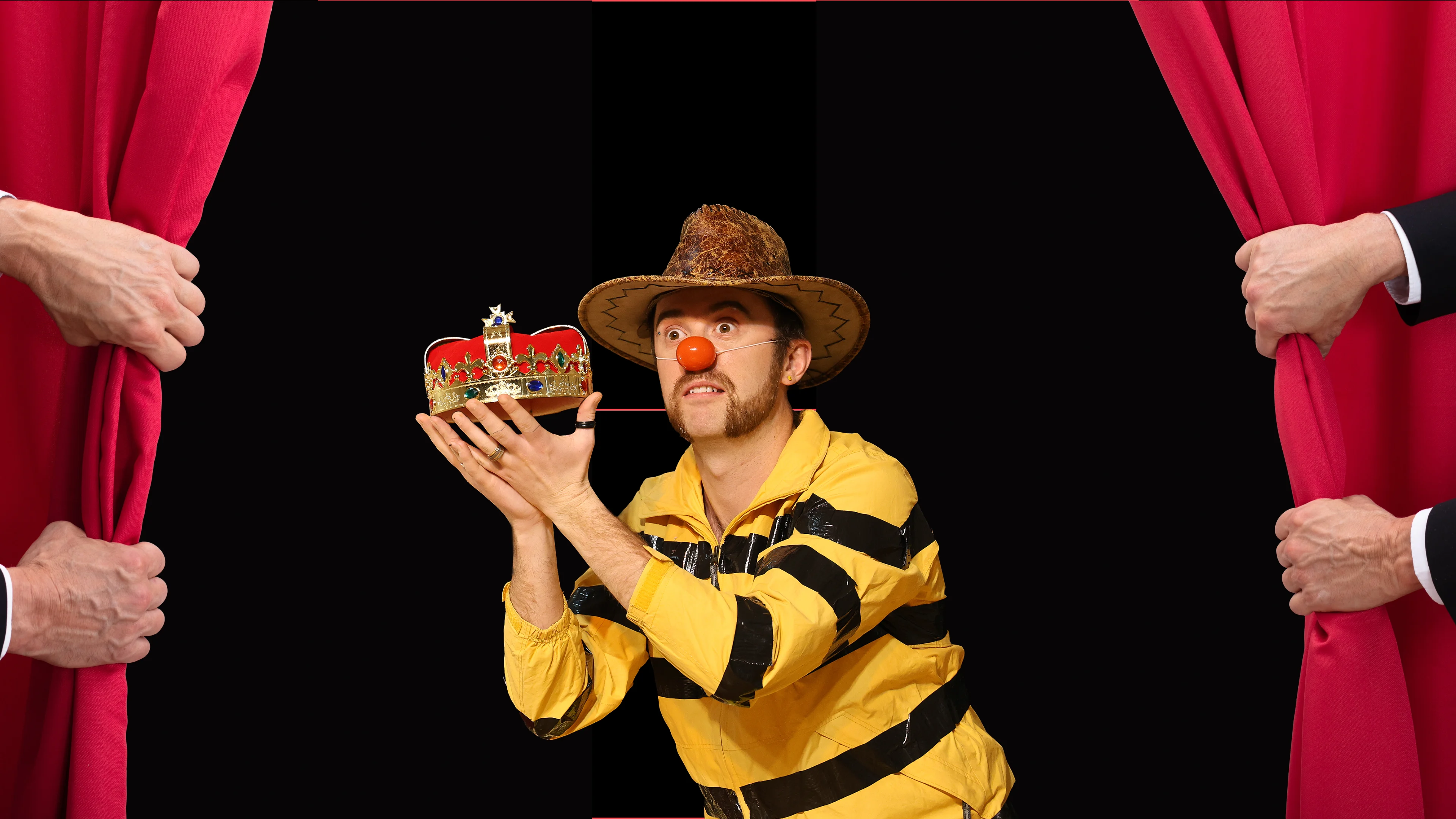
Taster Class In Clown Comedy
Theatre Deli, London
Learn More

A great ending is the gift wrap on the joke, the final bow of the scene, the moment the audience exhales in laughter. It can be sharp and verbal, physical and visual, or a shared silence that somehow says it all. In any form — stand-up, sketch, clown, improv, or character — the ending is where you cash in all the comic capital you’ve been building.
In stand-up terms, a punchline is the part of the joke that flips the audience’s expectation. The setup plants an assumption; the punchline overturns it.
Common mechanics:
Surprise — the audience thinks it knows where you’re going, but you turn left.
Brevity — the fewer words between the setup and the laugh, the stronger the hit.
Clarity — the audience must understand both the setup and the twist instantly.
Economy of language — cut any word that isn’t essential.
Echo or callback — a punchline can loop back to a previous idea for extra pop.
End on your biggest laugh or most satisfying moment — quit before the dip.
Make it feel earned — the ending should connect to the journey, even if absurdly.
Surprise without confusion — “I didn’t see that coming!” is great; “Wait, what?” is not.
Keep it tight — endings sag when they over-explain or linger.
Honour the form — a sketch blackout, a clown’s last shared glance, an improv edit, a stand-up’s final “thank you” each carry their own rhythm.
(Useful for sketch, clown, improv, and character work)
Maximum Heightening — push the game to its logical or illogical extreme.
Consequence Ending — the inevitable fallout of the game lands.
Comeuppance — the annoying or pompous get taken down.
Rug Pull — last-second context change reframes the whole scene.
Summary Tag — a quick tie-up line (less common now).
Breaking the Game — contradict the rules you’ve just set up.
Circular Ending — return to where you began.
Character Swap — roles reverse for comic effect.
Callback — resurrect an earlier gag.
Quick Twist — change the scene’s meaning in one beat.
Heightened Absurdity — leap past reason into chaos.
Meta-Commentary — acknowledge the show or audience.
Physical Finish — a big, funny image or stunt.
Shock Ending — abrupt, extreme change of tone.
Inverted Game — flip the central game’s logic.
Narrative Wrap — resolve the plot traditionally.
Parody or Homage — nod to a familiar work.
Undercutting Punchline — pop the balloon with one sharp line.
Mash-Up — throw everything together at the end.
Character Realisation — a revelation changes the scene’s weight.
Freeze Frame — stop in a telling pose.
Musical Button — song, sting, or chant.
Blackout Line — one final joke then lights out.
Absurdist Anti-Ending — refuse to resolve anything.
Deus Ex Machina — something wildly improbable ends it all.
Satirical Button — close on a thematic jab.
Stand-Up
Build momentum to your strongest closer — many comics save their “A” material for the end.
Use a callback closer — audiences love feeling in on the joke.
Keep your final punchline tight — end on the word or beat that gets the biggest laugh.
Acknowledge the crowd — “Thank you, you’ve been great” can itself be a laugh if timed right.
Avoid tacking on weaker tags after the peak laugh — that’s called “stepping on your closer.”
Improv
Listen for the natural high point — edit before the energy dips.
Group mind helps — let someone else take the blackout if they spot the ending moment first.
Use a physical or verbal callback to tie threads together.
If in doubt, “tag out” with a clear physical action or edit sweep.
Clown
End with the audience, not on them — the last beat is often a shared look, sigh, or complicit gesture.
Ride the last big laugh — your ending can simply be milking that final joy.
Breaking character can be a powerful closer if you’ve built a strong clown game.
Character Comedy
Stay in character until the last possible second — or break it deliberately as a twist.
Use your character’s core flaw or want to inform the ending.
A parody “overstay” (the character doesn’t know the show’s over) can be funny if played right.
Double-ending — getting the big laugh, then adding a smaller one.
Over-explaining — if they didn’t get it, explaining won’t make it funny.
Dragging past the peak — comedy is perishable; freshness matters.
Ending without intention — aimless fade-outs feel unsatisfying.
